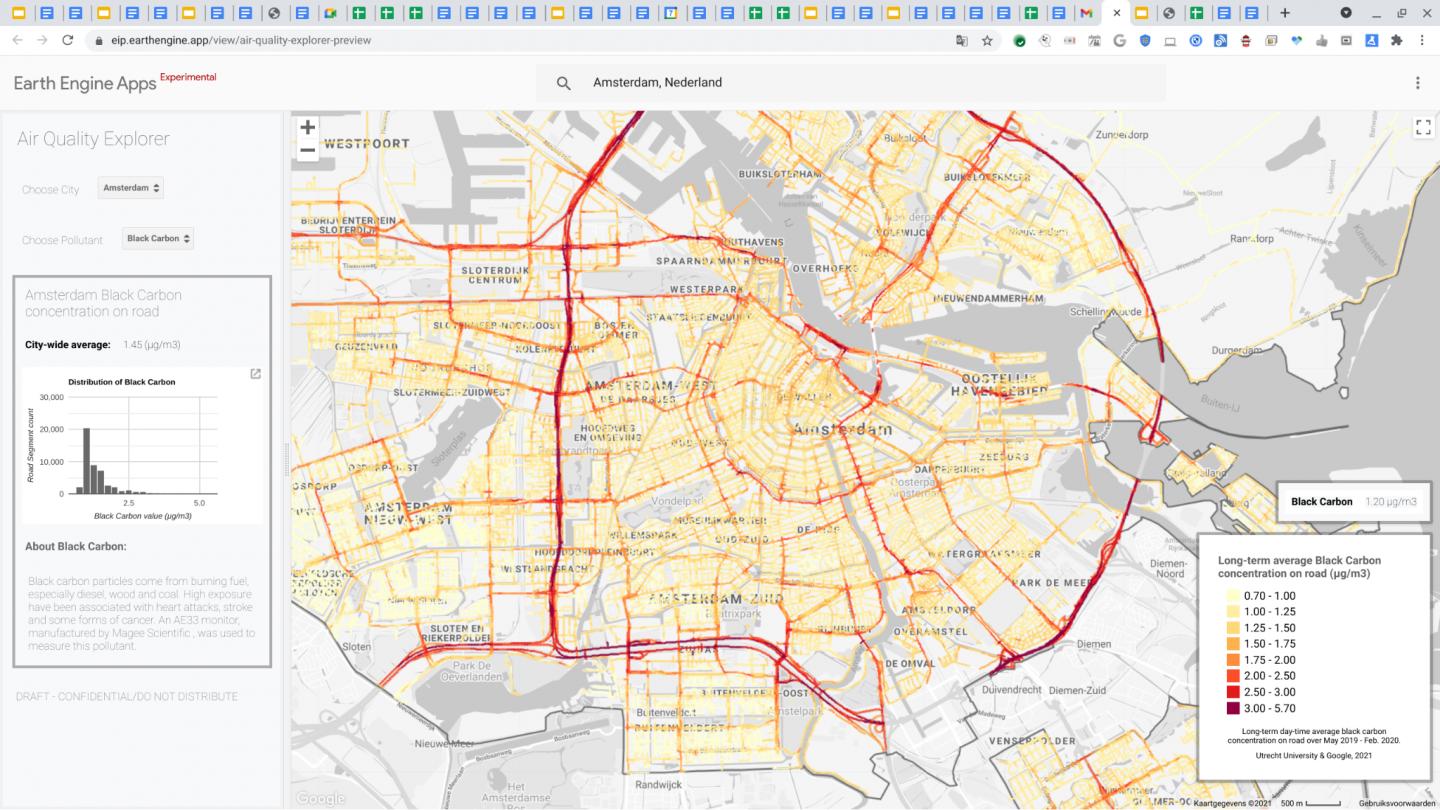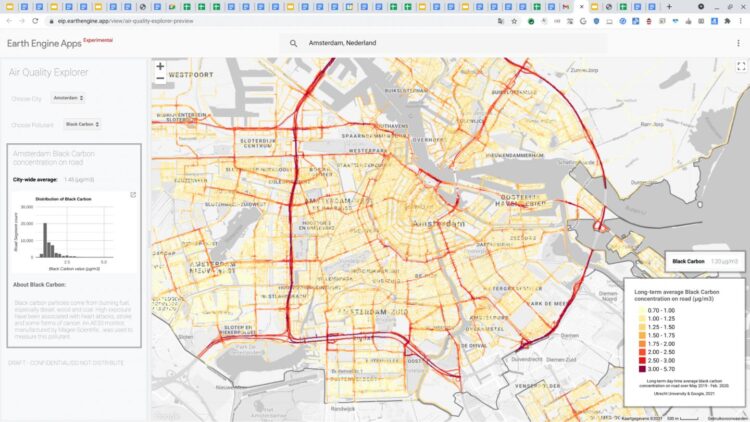
Credit: Google Maps & Utrecht University
Over the past two years, the municipality of Amsterdam, Utrecht University and Google have collaborated on Project Air View, in which the Amsterdam air quality was measured by two Street View cars with special measuring equipment. These maps have now been shared with the world for the first time. They show that motorized traffic can increase the concentration of ultrafine particles, soot and nitrogen dioxide in busy streets up to 3 times compared to quieter streets. The maps and data can be accessed via the websites of Google’s Environmental Insights Explorer (EIE) and Utrecht University.
The quality of the air we breathe has a major impact on our health. Hyperlocal street-level air quality information can help residents, city planners and others identify areas of poor air quality and develop plans for improvement.
Low emission zones Amsterdam in Google Maps
Besides sharing the data and maps from Project Air View, Google will also roll out a new feature in Google Maps in Amsterdam in the upcoming weeks that will visualize low-emission zones in the city. This new feature gives drivers insight into when they are navigating through an environmental zone and whether a specific vehicle is allowed in the area. Based on this information, drivers can, for example, choose an alternative means of transport or take a different route.
Measurements at street level
Pollution data are measured at street level with Project Air View, on both busy and less busy roads. This gives hyperlocal insights, which are a unique addition to the measurements from the fixed measuring stations that Amsterdam already uses for monitoring and planning. The project also offered the possibility to measure certain air pollutants that are currently not routinely mapped (such as ultrafine particles and soot). The approximately 6 million measurements with the Street View cars took place in Amsterdam over 9 months in 2019 and 2020.
Insights
Motorized road traffic is the most relevant source of air pollution in Amsterdam. Air pollution in a busy street with a lot of traffic is about three times higher than in a quiet street with little traffic.
The highest concentrations on the maps can be seen at the main access roads to the city, where there is a lot of car traffic. For example, for the three components measured (ultrafine particles, nitrogen dioxide, soot), the A10 ring road has the highest concentrations. Busy streets such as Stadhouderskade, Wibautstraat and Nieuwe Leeuwarderweg also score significantly higher than surrounding neighborhoods and streets. Concentrations around the city center appear to be higher compared to the neighborhoods that are more distant from the center (eg North, New West, South East). The data also show an increase in ultrafine particle concentrations in the vicinity of Schiphol, while concentrations of soot and nitrogen dioxide in these districts appear to be lower than in the rest of the city.
According to the Municipality of Amsterdam, Project Air View confirms existing insights into air quality in Amsterdam. In certain areas it complements the existing air monitoring network, such as the extensive measurements of other substances. Think of the relatively new component ultrafine particles, a substance that is also important for health.
Opportunities
Roel Vermeulen, Professor of Environmental Epidemiology and Exposome Science at Utrecht University: “It is crucial to have these very detailed maps of air pollution for an entire city, especially when we talk about harmful particles that are not regulated yet, like ultrafine particles. They are widely spread, and this is the first time we can see this in detail. This gives us the opportunity to investigate what the health effects are and whether there is a need for regulation.”
Google Netherlands’ country manager, Martijn Bertisen: “We are happy that we can contribute to creating new insights about air quality in Amsterdam and make them available to researchers, politicians – and the citizens themselves. It also shows how advanced technology and partnerships can help solve some of the greatest challenges of the time, such as sustainability, when government agencies and private actors work well together.”
Air View has also been introduced in Copenhagen, Dublin and London, among others. The two Street View cars and the measuring equipment used in Amsterdam have been taken over by Utrecht University and will now be used for the Data- and Knowledge Hub Healthy Urban Living and the European research programme EXPANSE to measure air quality in several European cities, with Basel as one of the next cities.
###
Media Contact
Iris Kruijen
[email protected]
Original Source
https:/





